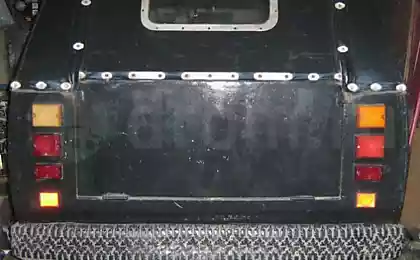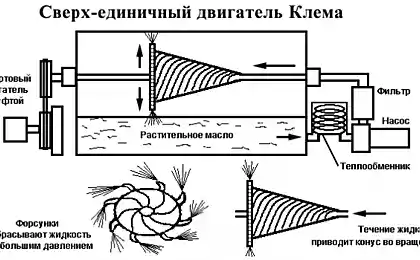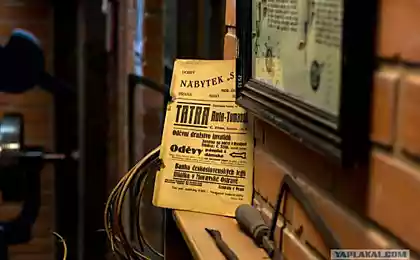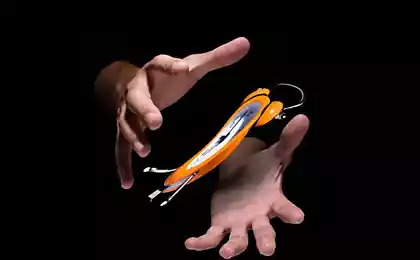852
Fantastic material present (12 photos)
For a long time cap of invisibility, transparent concrete and other items considered to be something impossible. Thanks to science, people have learned to create not only the cap of darkness, but entire suits that make a person invisible traps for the sound and energy that can achieve unprecedented success primarily in the construction and the military sphere. It is noteworthy that some of the submissions, there are more than one year, but for which almost no one heard.
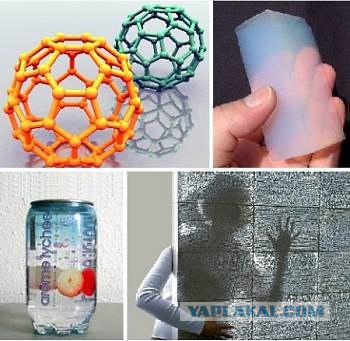
Teflon - yesterday material of the future
Despite the fact that Teflon is already known to all, and advertise wherever possible, it really is a unique material, which previously only dreamed of. Teflon is used to create heart valves in the aerospace industry, in the manufacture of household appliances and kitchen appliances. Teflon is indifferent to alkalis and acids, it does not react with the food, because is harmless to humans (as previously thought).
Currently, the US federal agency for environmental protection (EPA) banned the pan with Teflon coating. In addition, in 2015 it is planned at all "Round" with the production of Teflon. As always, it was found that the product is considered safe is very dangerous. At low doses, it is likely, lethal to animals, and its accumulation in systemic Teflon our body can lead to cancer, mutations in children and other problems.
Yet, despite these problems, Teflon is a unique material, which saved the lives of more than one person - even by the already mentioned heart valves. This is the first of materials whose appearance was predicted as a science fiction and scientists of the past years.

Ultra-thin superconductors
The phenomenon of superconductivity has long been known, but unfortunately, it is practically difficult to apply fairly, because the real temperature superconductivity is still working only in very low temperatures (That is now an abundance of all sorts of superconductivity). Recently, however, scientists have received some promising results through experiments with ultrathin wires. Perhaps, after a while we get a superconductor that can work at normal temperatures.

Flexible solar panels
Until now, I was tormented by one question: why not cover our houses with solar panels, protected against water and other adverse factors. It turns out that all of the low "survival" solar panels, plus the high cost of their production.
However, a few months ago, scientists presented to the public flexible solar cells, the production of which is worth a penny. I think it is for a similar material - the future. Imagine what is possible thanks to the introduction of flexible, thin, resistant to external influences solar panels!

Energy sorbent d3O
This is a fantastic material for its properties and has been used in the manufacture of clothing, shoes, and in the military. d3O is a gel that changes its density is depending on external factors. For example, you can crumple it on hand as clay, can form lumps of the substance. However, it should hit it with a hammer, and d3O instantly hardens, approaching the density of a solid rock.
Warming leads to the same result, so many companies will find d3O helpful.

Graphene
This substance is a typical carbon atoms of which are connected in a two-dimensional hexagonal crystal lattice. Scientists claim that graphene can be represented as a single plane of graphite, which is separated from the bulk crystal. This material has excellent mechanical rigidity and good thermal conductivity. Its conductivity makes it a promising material for use in various industries.
Graphene was first obtained in 2004, and its properties are not fully understood.

Fullerenes
This material is the same as the carbon atoms of which are connected more interesting way than graphene. The existence and availability of fullerenes was predicted as early as 1985, but they were only discovered in 1996. Interestingly, the fullerenes contained in the soot, which is formed in an arc discharge on graphite electrodes. Earlier fullerenes simply did not notice. Now it is a matter studied by scientists in many countries, and some can not practically be used fullerenes. For example, it was created "nanokley" that can seal virtually anything that can tear or break and sealed the thing in place of bonding is virtually impossible.
Incidentally, fullerenes stronger than diamond.
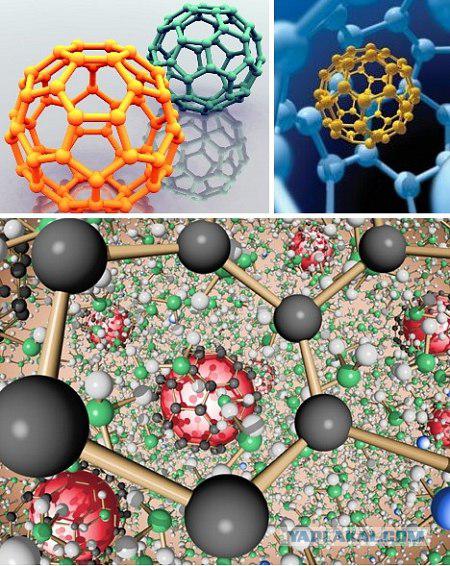
Cloak of Invisibility
Perhaps even Harry Potter would be envious owner coat or a jacket of a material created entirely conventional scientists. At first it was just a concept, but now the material to become a person or thing clear - the reality of our days.
There are several variations of such structures, and they all work, "causing" visible rays as it skirted the obstacle met on the other side. However, one of invisible raincoats simply transmits a "picture" on the one side to the other by means of miniature cameras. But all the rest could be called science fiction.

The cone of silence for submarines
There was a comedy series about a secret agent Maxwell Smart. When he came to his headquarters, then he spoke to the chief of special "cone of silence" that helped to comply with the absolute silence and the conversation no one could overhear.
Modern scientists did something similar, equipping the submarine device that can put out sound waves, allowing the submarine to become invisible to sonar.

Transparent aluminum
Scientists were able to create a material that has a lot to do with precious stones, but is a transparent aluminum. However, to receive such material is difficult, and the cost is close to $ 5 per square centimeter.
"Transparent aluminum 'really is not metal. This kind of alumina nanoparticles is sintered at very high temperatures. Incidentally, the strength of the material is three times higher than that of the highest quality steels.

Translucent concrete
Builders, not scientists have developed a material which is a translucent concrete. In fact, everything is simple: an ordinary concrete block introduced hundreds of thousands of tiny "strands" of the fiber. The result is a very durable material, which is transparent to sunlight.

Aerogel
This is one of the most interesting materials discussed in this post. The fact that the airgel is a "relative" of ordinary glass, but, as you know, this is not glass. Aerogel only three times heavier than air, and at 99, 98% airgel consists of air. This material is very durable, it is an excellent insulating material melts at a very high temperature and generally has a number of interesting properties.
Mainly used in the aerospace industry, although now it is used in other areas. This material is quite expensive, but its beneficial properties with more than cover the costs necessary for the production of airgel.
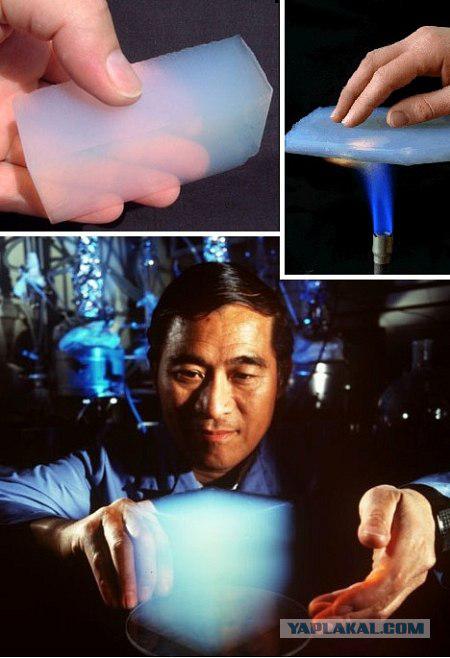
Source:

Teflon - yesterday material of the future
Despite the fact that Teflon is already known to all, and advertise wherever possible, it really is a unique material, which previously only dreamed of. Teflon is used to create heart valves in the aerospace industry, in the manufacture of household appliances and kitchen appliances. Teflon is indifferent to alkalis and acids, it does not react with the food, because is harmless to humans (as previously thought).
Currently, the US federal agency for environmental protection (EPA) banned the pan with Teflon coating. In addition, in 2015 it is planned at all "Round" with the production of Teflon. As always, it was found that the product is considered safe is very dangerous. At low doses, it is likely, lethal to animals, and its accumulation in systemic Teflon our body can lead to cancer, mutations in children and other problems.
Yet, despite these problems, Teflon is a unique material, which saved the lives of more than one person - even by the already mentioned heart valves. This is the first of materials whose appearance was predicted as a science fiction and scientists of the past years.

Ultra-thin superconductors
The phenomenon of superconductivity has long been known, but unfortunately, it is practically difficult to apply fairly, because the real temperature superconductivity is still working only in very low temperatures (That is now an abundance of all sorts of superconductivity). Recently, however, scientists have received some promising results through experiments with ultrathin wires. Perhaps, after a while we get a superconductor that can work at normal temperatures.

Flexible solar panels
Until now, I was tormented by one question: why not cover our houses with solar panels, protected against water and other adverse factors. It turns out that all of the low "survival" solar panels, plus the high cost of their production.
However, a few months ago, scientists presented to the public flexible solar cells, the production of which is worth a penny. I think it is for a similar material - the future. Imagine what is possible thanks to the introduction of flexible, thin, resistant to external influences solar panels!

Energy sorbent d3O
This is a fantastic material for its properties and has been used in the manufacture of clothing, shoes, and in the military. d3O is a gel that changes its density is depending on external factors. For example, you can crumple it on hand as clay, can form lumps of the substance. However, it should hit it with a hammer, and d3O instantly hardens, approaching the density of a solid rock.
Warming leads to the same result, so many companies will find d3O helpful.

Graphene
This substance is a typical carbon atoms of which are connected in a two-dimensional hexagonal crystal lattice. Scientists claim that graphene can be represented as a single plane of graphite, which is separated from the bulk crystal. This material has excellent mechanical rigidity and good thermal conductivity. Its conductivity makes it a promising material for use in various industries.
Graphene was first obtained in 2004, and its properties are not fully understood.

Fullerenes
This material is the same as the carbon atoms of which are connected more interesting way than graphene. The existence and availability of fullerenes was predicted as early as 1985, but they were only discovered in 1996. Interestingly, the fullerenes contained in the soot, which is formed in an arc discharge on graphite electrodes. Earlier fullerenes simply did not notice. Now it is a matter studied by scientists in many countries, and some can not practically be used fullerenes. For example, it was created "nanokley" that can seal virtually anything that can tear or break and sealed the thing in place of bonding is virtually impossible.
Incidentally, fullerenes stronger than diamond.

Cloak of Invisibility
Perhaps even Harry Potter would be envious owner coat or a jacket of a material created entirely conventional scientists. At first it was just a concept, but now the material to become a person or thing clear - the reality of our days.
There are several variations of such structures, and they all work, "causing" visible rays as it skirted the obstacle met on the other side. However, one of invisible raincoats simply transmits a "picture" on the one side to the other by means of miniature cameras. But all the rest could be called science fiction.

The cone of silence for submarines
There was a comedy series about a secret agent Maxwell Smart. When he came to his headquarters, then he spoke to the chief of special "cone of silence" that helped to comply with the absolute silence and the conversation no one could overhear.
Modern scientists did something similar, equipping the submarine device that can put out sound waves, allowing the submarine to become invisible to sonar.

Transparent aluminum
Scientists were able to create a material that has a lot to do with precious stones, but is a transparent aluminum. However, to receive such material is difficult, and the cost is close to $ 5 per square centimeter.
"Transparent aluminum 'really is not metal. This kind of alumina nanoparticles is sintered at very high temperatures. Incidentally, the strength of the material is three times higher than that of the highest quality steels.

Translucent concrete
Builders, not scientists have developed a material which is a translucent concrete. In fact, everything is simple: an ordinary concrete block introduced hundreds of thousands of tiny "strands" of the fiber. The result is a very durable material, which is transparent to sunlight.

Aerogel
This is one of the most interesting materials discussed in this post. The fact that the airgel is a "relative" of ordinary glass, but, as you know, this is not glass. Aerogel only three times heavier than air, and at 99, 98% airgel consists of air. This material is very durable, it is an excellent insulating material melts at a very high temperature and generally has a number of interesting properties.
Mainly used in the aerospace industry, although now it is used in other areas. This material is quite expensive, but its beneficial properties with more than cover the costs necessary for the production of airgel.

Source:







